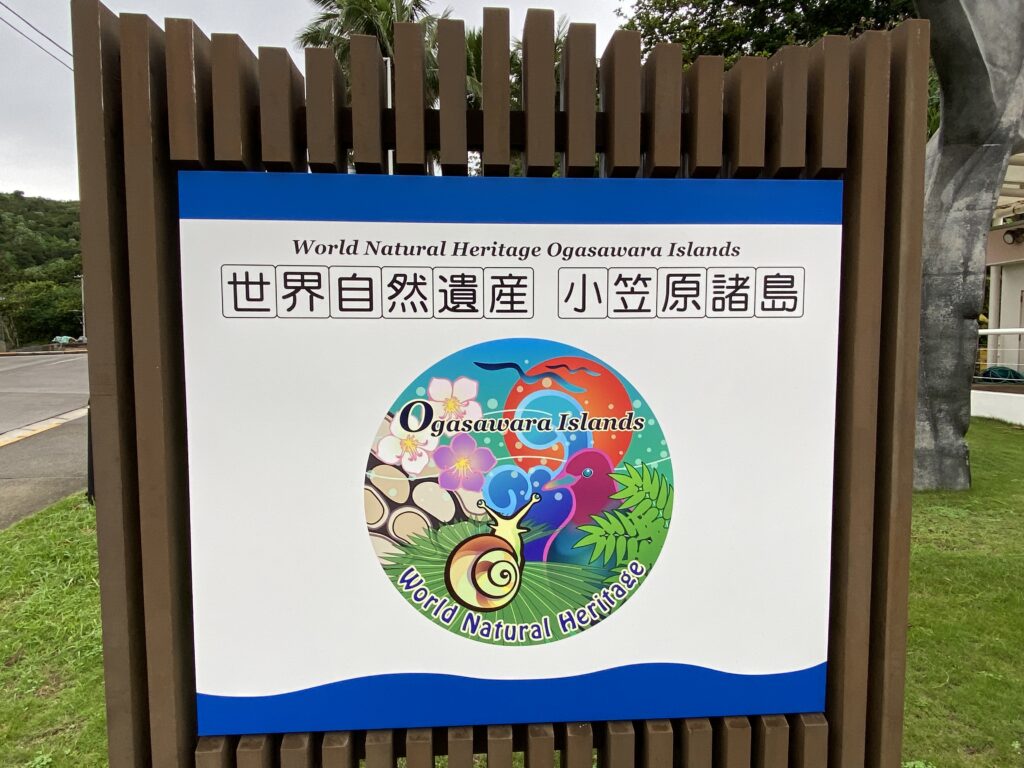Ogasawara Islands

The Ogasawara Islands are a group of oceanic islands that display the evolution process since the birth of the islands.
The forested landscape holds plant species of both Southeast Asian and Northeast Asian origin. It is a habitat for endemic and endangered species, including the Bonin Flying Fox, a critically endangered bat. Also remarkable are its 134 species of land snails and its variety of vascular plants.
Community Perspective: Zoë reports back on ample opportunities for hiking and sea-based activities such as diving and snorkeling. Els describes the land-based activities and provides practical tips on getting to Ogasawara.


Map of Ogasawara Islands
Community Reviews
ZCTLife
I traveled here years ago while teaching English in Tokyo. I had a vacation, had already traveled widely, and this place caught my eye, for its obscurity. Administratively, the islands are part of the city of Tokyo, even though they’re on the same latitude as Okinawa, much further out into the Pacific than any other Japanese islands. Iwo Jima, where the US Marines raised their flag on 23 February 1945, is part of the island group, but civilian visitation is almost completely restricted. Another island was also off limits when I visited, due to a Japanese military base. At the time, traveling by ferry in the cheapest class seemed like an interesting travel experience, and I remember lying around on fake tatami mats, eating snacks and drinking beer. Speaking Japanese helped, as I chatted with folks my own age, and it was fun when the boat rolled in some seas. We all went ‘whoa’ together, tried not to slide, and then chuckled nervously.
When I finally arrived in Chichijima (Dad Island), I was surprised to find many young people from around the world visiting, and they asked me if I was there to watch the international junior surfing championships. Apparently, during the typhoon season—late summer/ early fall—, there’s epic swell that attracts some of the world’s best surfers. I hadn’t planned to watch, but I did wander around a few beaches without seeing much actual surfing. On the other hand, I did spend a lot of time with several surfers from America, South Africa and Australia, among other countries, translating for them. One group had a lot of difficulty with their traditional bed and breakfast, until I bridged the cultural and language divide. So, I ended up getting invited to join some surfers, drinking a lot on the beach and listening to music at night. And I didn’t actually see as many of the sights as I had planned. It was a very relaxing, fun and different vacation for me.
If I had it to do over again, I would not go. Hahajima (Mom Island) is another 2 hour ferry ride from Chichijima. Long, slow ferry rides let you experience what it’s like to be cargo: boring. I don’t remember the food being particularly good, and it was very difficult to get around. There was a rumor that the bus would take my Tokyo transit pass, but I don’t remember ever seeing a bus. I got rides from locals and spent my time looking at tropical beaches and cliffs in lush jungle. Lots of people told me about the Bonin Islands flying fox, but I didn’t see any. I also remember being disappointed that I couldn’t see any of the historic battle sites, which would have made the experience more memorable.
Niijima in the Izu Islands is far easier to get to from Tokyo by fast ferry 3 hours or less than an hour flying. And they also have pretty beaches and good surfing. But, if you’re really interested in world heritage sites, and you can sit on the floor of a ferry for 24 hours with Japanese discount travelers, then maybe you would enjoy it.
Read more from ZCTLife here.
Els Slots

My first one from the “Takes 5 days or more to visit”-list! The Ogasawara Islands are a Japanese archipelago in the Northern Pacific Ocean about 1,000km south of Tokyo and 1,800km north of Guam. They can only be visited by a weekly ferry which takes 24 hours to cover the distance. About 2,500 people inhabit its two main islands. Settlers arrived here in the 19th century, the islands were mostly uninhabited before. After having been taken by the US during the Second World War, the islands were returned to Japan in 1968.
Despite being a group of islands, the OUV is not marine but firmly focused on land (rapidly diversifying land snails! endemic plants!) – even UNESCO seems to have forgotten that as its Gallery only shows photos of sea creatures. About 80% of the core zones of the 5 components are land-based. On Chichi-jima, where I stayed for 3 nights, the core zone of the WHS covers about 65% of this island; the coastal villages and agricultural fields are excluded.
The protected area that lies closest to the main settlement of Omura is Miyanohama Beach. And that is where I headed on my first afternoon on the island. It’s only a 1.2km walk, but I learned quickly that the hills on the island are very steep. The bay has characteristic volcanic arches and outcrops, and inland I got my first good look at the endemic, fruit-bearing Pandanus trees.
In the evening I joined a Night Tour. My main goal was to see a Bonin Flying Fox, the only endemic mammal of Ogasawara and a nocturnal creature. We started the 2-hour tour at the harbour, where we stared at some eel-like fish. Then we drove to Miyanohama Beach again, where 5 minibusses from other tour companies had already gathered at the parking lot. A long story in Japanese and a lot of anticipation followed (especially by me as I didn’t understand a word), but it turned out that we were to release baby green turtles into the sea! Staff from the Ogasawara Marine Center had brought boxes full of them and gave a box each to the tour leaders. It did feel a bit ambivalent though as green turtle features prominently on the menus of Ogasawara’s restaurants as sushi or in a stew. A licensed fishery is allowed to traditionally capture a limited number of green turtles yearly.
This all took quite a bit of time, so I hoped it wouldn’t hinder my chances of seeing a Flying Fox. We drove to the south of the island (it’s so small that this takes about 15 minutes), stopping at a dark road lined with a series of Pandanus trees. This was the perfect place to look for a Bonin Flying Fox, as the fruits of this tree are its favourites. You could already tell by the mess on the ground that one had been active. It took a bit of searching by the guide (only red lens torches are used), but there it was: hanging upside down, with piercing eyes, and a frizzy hairstyle. Mission completed for me, and a slight revenge for the elusive Shiretoko Brown Bear. We finished the tour with a look at tiny fungi that glow in the dark.
On day two I took the local bus to the last stop, the “southernmost bus stop of Tokyo” (the whole of Ogasawara is a subprefecture of Tokyo). This area called after Kominato Beach is probably the best part of the island to explore on your own. It has a lovely sandy beach surrounded by cliffs showing displays of pillow lava rock created by underwater eruptions, there’s a river walk along the Yatsusegawa which is good for birds and generally scenic. And it’s the starting point for more strenuous hikes. You can walk along the mountain ridges to remote beaches 2 hours away. I only went to Nakajima Pass (20 minutes uphill), which was fully worth it for its stunning coastal views (see main site photo).
Back in the main village of Omura, there is a Visitor Center and a World Heritage Center. Here you can get a better understanding of the unique evolutionary processes that occurred in Ogasawara due to its isolation. It originated from a volcanic eruption, and every species now on it came flying or floating in from different regions. The centers also are probably the only place where you can see snails: the Nomination File is full of them, but in reality, they live mostly on the uninhabited islands and come out only in the wet season. Especially the evolutionary course of the Mandarina land snail is fascinating.
The main part of the national park on Chichi-jima consists of forested mountains. There is a mountain road, but it cannot be accessed by bus and hiking or biking it seems a stretch. Furthermore, several parts of the forest need an official guide to enter. So I chose to do a Forest Hiking Tour with a company called TAKE Nature Academy. As a group of 7, we went to visit 6 different habitats across the island and did a short walk at each of them. We ended up exactly where I had hoped to go. Highlights included Iwayama and Higashidaira Sanctuary. To both specific biosecurity rules apply: there’s a platform at the start of the trail where you have to scrub your shoes to get rid of seeds and spray the soles. There’s also a creative visitor counting system by placing coral rocks into a tube.
Iwayama lies in the easternmost part of the island, the volcanic rock is exposed here and there are splendid views along the coast again. The Higashidaira Sanctuary, to protect the endemic Red-headed Wood Pigeon, immediately intrigued me when I saw it on a map during my preparations. This is firmly closed to outsiders, it is even fully fenced – not against tourists but because of feral cats, which have become the biggest threat to native birds. When walking it is common to see traps to catch them as well. I must say that the nature trail here was a bit of a letdown, although we saw some ‘new’ plant species. No bird in sight though!
I loved my stay in Ogasawara and would have happily extended it to 5 days if it were logistically possible – I didn’t do any water-based activities as these aren’t my favourites overall, but you can go whale watching or visit the uninhabited island of Minamijima where they have fossilized snails. Ogasawara combines the good parts of several other island WHS, such as the small-community vibe of Easter Island (the Farewell Ceremony at the ferry’s departure is so moving), the sweeping beaches of Fernando do Noronha, the steep forested slopes of Madeira and the high levels of endemism in plants and animals of the Galapagos Islands. There are lots of practical details to share as well of course as information on Ogasawara in English is scarce – I’ve gathered them all in this Forum post.
Read more from Els Slots here.
Zoë Sheng
Chinese-Canadian - 06-Jul-23 -

Also called the Bonin Islands but that won't get you far with the locals, has 30 islands but you will only visit two of them tops. You will always arrive at Chichi-jima (Father Island) by ferry and it continues to Haha-jima (Mother Island) before returning the same way. This ferry goes twice a week most of the year and takes 24h from Tokyo. There is no faster way to get here and returning will only be after at least 3 days on the island. You will not want to leave as the islands are lovely but you MAY want to leave because it's quite off the beaten path and expensive too. I've been wanting to do this your EVERY time I had something planned for Japan and buying the ferry tickets is actually really easy, but not so much for hotels!! They are sold out for months ahead especially for the golden weeks (=peak holiday season) and to make things worse you can ONLY book by contacting the hotels/hostels/"guest houses" which don't speak English. So...err.. good luck? Well there is one place on booking.com but it far way from the port area and getting to there and then getting around seemed very annoying. You can rent a scooter or car if you really want but that just seems silly for a place like this. Scooter...maybe. and there is a bus service but it would just be a burden to stay far away and having to come back to port for your boat activities etc. Anyhow, you will need some help to book accommodation.
As for the area there is lots to do. Hiking is the easiest as it doesn't involve any tour organizer, there are many dive and snorkel operators, surfing (all kinds but the waves weren't so great so maybe rather windsurfing if that's your thing) and what else you expect on the islands: kayaking, boating, fishing, etc. You can also enjoy many of the beaches and each one is idyllic, gorgeous and worth your time. So overall the place is a great holiday. I also saw sperm whales for the first time.
As for it's UNESCO status I have to say I can't really chime in on this too much. It mainly consists of endangered species which are on the uninhabited islands, off-limits to tourists or even the locals don't go there knowing it's protected for a reason. The island is sure different being so isolated but it's hard to say how in detail. You will see the palm tree, ferns, it's not so different to what you might expect, and yes you do see many snails all over the place when it gets less dry and hot. Unfortunately no-one can take an explorer tour to find these a la Amazon or other rain forests. It's mainly hiking on the main islands or explore underwater which definitely isn't too different to other parts of the Pacific ocean. I suppose the healthy life both above and below the surface ensure this place will stay a unique site for a long time. Let's keep this place mostly unexplored to protect nature. Please leave the dolphins alone, Japan. [<- required rant ;)]
Community Rating
Site Info
Site History
2011 Inscribed
Site Links
Unesco Website
Official Website
Related
In the News
Connections
The site has 34 connections
Damaged
Ecology
Geography
History
Human Activity
Timeline
Trivia
Visiting conditions
WHS Names
WHS on Other Lists
World Heritage Process
Visitors
11 Community Members have visited.
The Plaque
 (external source)
(external source)